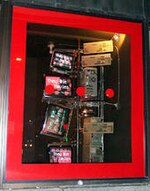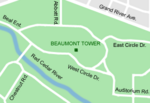The Great Lakes Quilt Center is the Michigan State University Museum’s center for quilt-related research, education, and exhibition activities. While the museum, established in 1857, has long held significant collections, its focus of activities on quilt scholarship and education began with the launch of the Michigan Quilt Project at the museum in 1984. The Michigan Quilt Project not only spearheaded the documentation of the state's quiltmaking history, but also stimulated interest in strengthening the museum's quilt collection, upgrading its care, and expanding its use. As of 2008, the Michigan Quilt Project has collected documentation on over 9000 quilts in the state and the collection of quilts numbers over 700 with significant examples from Michigan and the Great Lakes region, examples of quilts from numerous African countries, major ethnographic collections of Native American quilts and Michigan African American quilts, and special collections assembled by Kitty Clark Cole, Harriet Clarke, Merry and Albert Silber, Deborah Harding, and Betty Quarton Hoard. The MSU Museum also houses two important collections developed by pioneering American quilt historians Cuesta Benberry and Mary Schafer.
In partnership with MATRIX: Center for Humane Arts, Letters, and Social Sciences OnLine and the Alliance for American Quilts, the MSU Museum/Great Lakes Quilt Center has spearheaded the development of two major national projects. The multimedia Quilt Treasures Project develops “web portraits” built from video-taped oral history and supporting archival materials. These web portraits document the lives, work, and influence of leaders of the American quilt revival of the last quarter of the 20th century. The Quilt Index is a national digital repository of quilt and quilt-related collections in distributed physical repositories. The Quilt Index digitally preserves the collections and makes them accessible and searchable for research and teaching. The project was beta-tested with the collections of the MSU Museum and, as of 2008, the repository holds over 18000 quilts from nine collections. By the end of 2010, another twelve collections will be added and plans are underway for the addition of scores more.









